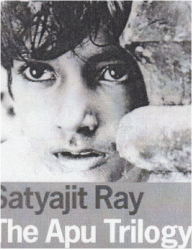
A boy called Apu and his creator, Satyajit Ray, changed my life. It was only yesterday, give or take a few decades, when I plunged into the world of Apu and my love of India – and of all things foreign, exotic, different from everything I knew, and into a life of travel, exploration, and the wonders of a world that never stops amazing me.
At age nineteen, I’d spent my entire life in three Western states. Now, I was taking the Greyhound bus from San Jose to India. At my urging, two college friends had joined me on an expedition to the exotic, wicked, dangerous territory of San Francisco’s North Beach. In that distant time, DVDs, VHS tapes, cable television, personal computers, the internet, and all of today’s technology that make it so easy to dip into the cultures of the world around us didn’t exist even in science fiction. Only two ways existed to see an old movie or most foreign movies: the late late show on television or one of the flea trap storefront movie houses found only in big, cosmopolitan cities.
After we arrived in San Francisco, we hiked up the hills to a tiny makeshift theatre on the side of one of the steepest hills, near some of the famous jazz and comedy clubs of the era, where Cal Tjader, Lenny Bruce, and Phyllis Diller – among others -- were making their names, paid our couple of bucks, and climbed the steps into a cold dark room filled with metal folding chairs. This uncomfortable, unlikely temple was about to show all three movies of Satyajit Ray’s Apu Trilogy – the story of a Bengali boy, his family, and his journey through life.
This was the first, and perhaps only, time that all three of these great films were shown together, one after the other, in San Francisco – maybe in Northern California. Fortunately, I’d seen the little announcement in the San Francisco Chronicle and had decided that, whatever else happened, I’d be there. It never occurred to me how paralyzing painful five-plus hours on metal folding chairs in an icebox could be. But it was worth it!
A while after that, I managed to see that other classic Indian film epic, Mother India, with the great Indian actress Nargis as Radha, a village woman who struggles to raise her sons through poverty, disasters caused by both nature and men, and the difficult times India faced after independence – an Indian Gone with the Wind, and then some. Gradually, I discovered more of the world through Russian, French, Italian, Polish, British, Mexican and other films from around the globe. Then, one day, I actually was able to begin seeing the countries of the world, myself.
It took me a while to reach India, but along the way I discovered a lot of the world, including the Middle East, which eventually led to my new book, DELPHINE, which is set in Turkey, Palestine, and several other countries. My wife and I now have visited India three times, exploring areas in the north, south, and east, and there is much more that we want to discover. To paraphrase what Dr. Johnson said about London: If you are tired of India, you are tired of life. Or, I can add, truthfully: If you are tired of discovering the world, you are tired of life.
Today, we are incredibly fortunate that it is so easy to see and interact with the world beyond our own home: on television, the internet, movies, and face to face. One of the results of all this interaction is that the world is changing, even as we discover it. This may be good in some ways and harmful in others, but it is happening, nonetheless. Perhaps, someday, as we continue to discover and know each other across the globe, we all will approach some kind of understanding and tolerance – and hatred of those who are different from us will vanish. At least, we can hope.
 RSS Feed
RSS Feed